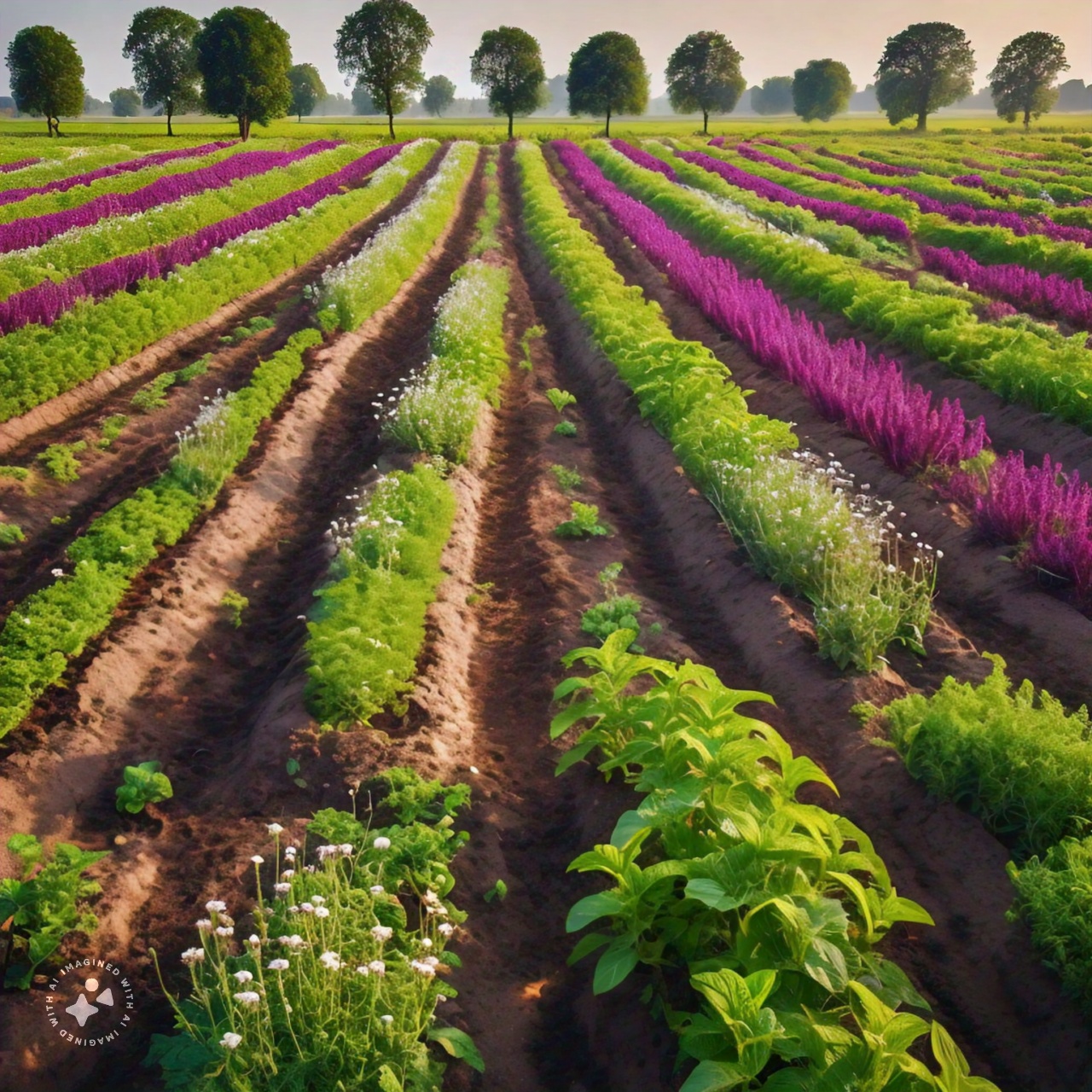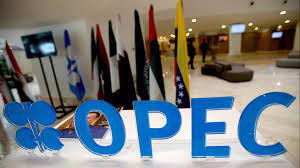Narrowal, Pakistan! Great idea to start a herb business! Here’s a step-by-step guide to grow profitable herbs:
Choose Profitable Herbs:
1. Basil: High demand in Pakistan’s culinary industry.
2. Mint: Used in teas, drinks, and desserts.
3. Cilantro: Popular in Pakistani cuisine.
4. Dill: Used in pickling and cooking.
5. Lemongrass: Used in teas, cosmetics, and pharmaceuticals.
Prepare the Land:
1. Soil: Test and amend the soil to suit the chosen herbs.
2. Irrigation: Ensure a reliable water supply.
3. Sunlight: Most herbs need at least 4-6 hours of direct sunlight.
Cultivation Tips:
1. Seeds or Seedlings: Start with high-quality seeds or seedlings.
2. Spacing: Plant herbs at the recommended spacing to prevent overcrowding.
3. Fertilization: Use organic or chemical fertilizers as needed.
4. Pest and Disease Management: Monitor and control pests and diseases regularly.
Harvesting and Processing:
1. Regular Harvesting: Encourages bushy growth and prevents flowering.
2. Drying: Dry herbs properly to preserve flavor and aroma.
3. Packaging: Package herbs attractively for market sale.
Business Tips:
1. Market Research: Identify potential buyers and competitors.
2. Pricing: Set competitive prices.
3. Marketing: Utilize social media, word-of-mouth, and local advertising.
4. Value Addition: Consider value-added products like herbal teas, sauces, or cosmetics.
Start small, be patient, and scale up as your business grows! Good luck!
Pakistan has a huge potential for exporting herbs, and here are some in-demand herbs that can be exported:
1. Dill: Used in pickling, sauces, and as a flavoring agent, dill is in high demand in countries like the USA, Canada, and the UK.
2. Mint: Peppermint and spearmint are popular for teas, drinks, and desserts in countries like the UK, USA, and Australia.
3. Lemongrass: Used in teas, soups, and as a flavoring agent, lemongrass is in demand in countries like the USA, Japan, and Australia.
4. Basil: Sweet basil is a popular herb in many cuisines, and there’s a strong demand for it in countries like the USA, Italy, and France.
5. Cilantro: Also known as coriander, cilantro is widely used in Middle Eastern, Indian, and Asian cuisines, making it a popular export to countries like the UAE, Saudi Arabia, and India.
6. Parsley: Used as a garnish and in salads, parsley is in demand in countries like the USA, Canada, and the UK.
7. Thyme: Used in soups, sauces, and as a flavoring agent, thyme is exported to countries like the USA, France, and Germany.
8. Rosemary: Used in meats, soups, and as a flavoring agent, rosemary is in demand in countries like the USA, UK, and Australia.
9. Sage: Used in stuffing, sausages, and as a flavoring agent, sage is exported to countries like the USA, UK, and Canada.
10. Oregano: Used in pizzas, salads, and as a flavoring agent, oregano is in demand in countries like the USA, Italy, and Greece.
When exporting herbs, ensure you comply with international regulations, packaging, and labeling requirements. Research potential buyers, market trends, and prices to maximize your export potential. Good luck!
What are the international regulations?
When exporting herbs internationally, you’ll need to comply with various regulations and standards. Here are some key ones:
1. Phytosanitary Certificate: Issued by the Plant Protection Department in Pakistan, this certificate ensures your herbs are free from pests and diseases.
2. Export Permit: Obtain a permit from the Ministry of Commerce in Pakistan, which may require documentation like a commercial invoice, packing list, and certificate of origin.
3. Food Safety and Quality Standards: Comply with the food safety regulations of the destination country, such as the US FDA or EU food safety standards.
4. Labeling and Packaging: Follow labeling and packaging requirements of the destination country, including language, ingredient listing, and allergen warnings.
5. Codex Alimentarius Commission (CAC) Standards: Adhere to international food standards set by the CAC, which covers aspects like food hygiene, contaminants, and pesticide residues.
6. International Plant Protection Convention (IPPC) Standards: Comply with IPPC standards for plant health and pest management.
7. World Health Organization (WHO) Guidelines: Follow WHO guidelines for food quality and safety.
8. Good Agricultural and Collection Practices (GACP): Implement GACP guidelines for sustainable and responsible herb cultivation and collection.
9. Organic Certification: If exporting organic herbs, comply with organic standards like USDA Organic or EU Organic.
10. Customs Regulations: Familiarize yourself with customs regulations in both Pakistan and the destination country, including tariffs, taxes, and documentation requirements.
Remember to research specific regulations for your target market and stay updated on any changes. Compliance with international regulations will help ensure the smooth export of your herbs.
The cost of growing herbs and storing them in a small-sized factory can vary depending on several factors such as location, climate, herb type, and scale of operation. Here’s a rough estimate of the costs involved:
Growing Herbs:
1. Land preparation and soil amendments: PKR 50,000 – 100,000 (approximately $300-$600 USD) per acre.
2. Seeds and seedlings: PKR 10,000 – 20,000 (approximately $60-$120 USD) per acre.
3. Fertilizers and pest management: PKR 20,000 – 40,000 (approximately $120-$240 USD) per acre.
4. Labor costs: PKR 50,000 – 100,000 (approximately $300-$600 USD) per acre.
5. Irrigation and water costs: PKR 10,000 – 20,000 (approximately $60-$120 USD) per acre.
Total cost of growing herbs: PKR 140,000 – 280,000 (approximately $840-$1,680 USD) per acre.
Storing Herbs in a Small Factory:
1. Rent and utilities: PKR 50,000 – 100,000 (approximately $300-$600 USD) per month.
2. Equipment and machinery: PKR 100,000 – 200,000 (approximately $600-$1,200 USD).
3. Packaging materials: PKR 10,000 – 20,000 (approximately $60-$120 USD) per month.
4. Labor costs: PKR 20,000 – 40,000 (approximately $120-$240 USD) per month.
Total cost of storing herbs in a small factory: PKR 180,000 – 360,000 (approximately $1,080-$2,160 USD) per month.
Other Costs:
1. Marketing and sales: PKR 20,000 – 50,000 (approximately $120-$300 USD) per month.
2. Transportation and logistics: PKR 10,000 – 20,000 (approximately $60-$120 USD) per month.
Total other costs: PKR 30,000 – 70,000 (approximately $180-$420 USD) per month.
Total Estimated Cost:
PKR 350,000 – 710,000 (approximately $2,100-$4,260 USD) per month.
Note: These estimates are rough and can vary depending on various factors, such as the specific herbs being grown, the size of the factory, and the location. It’s essential to conduct thorough market research and create a detailed business plan to get a more accurate estimate of the costs involved.
“نارووال، پاکستان میں منافع بخش جڑی بوٹیوں کا کاروبار شروع کرنے کا مکمل رہنما”
نارووال، پاکستان! جڑی بوٹیوں کا کاروبار شروع کرنے کا بہترین آئیڈیا! یہاں منافع بخش جڑی بوٹیاں اگانے کے لیے ایک قدم بہ قدم گائیڈ ہے:
منافع بخش جڑی بوٹیاں منتخب کریں:
- تلسی: پاکستان کی کھانے کی صنعت میں زیادہ طلب۔
- پودینہ: چائے، مشروبات اور میٹھے میں استعمال ہوتا ہے۔
- دھنیا: پاکستانی کھانوں میں مقبول۔
- سویا: اچار اور کھانا پکانے میں استعمال ہوتا ہے۔
- لیمن گراس: چائے، کاسمیٹکس اور دواسازی میں استعمال ہوتا ہے۔
زمین کی تیاری:
- مٹی: منتخب شدہ جڑی بوٹیوں کے مطابق مٹی کی جانچ اور بہتری کریں۔
- آبپاشی: پانی کی قابل اعتماد سپلائی یقینی بنائیں۔
- سورج کی روشنی: زیادہ تر جڑی بوٹیاں کم از کم 4-6 گھنٹے کی براہ راست سورج کی روشنی چاہتی ہیں۔
کاشت کی تجاویز:
- بیج یا پودے: اعلیٰ معیار کے بیج یا پودوں سے شروع کریں۔
- فاصلہ: جڑی بوٹیوں کو تجویز کردہ فاصلے پر لگائیں تاکہ زیادہ بھیڑ نہ ہو۔
- کھاد ڈالنا: ضرورت کے مطابق نامیاتی یا کیمیائی کھاد استعمال کریں۔
- کیڑوں اور بیماریوں کا انتظام: باقاعدگی سے کیڑوں اور بیماریوں کی نگرانی اور کنٹرول کریں۔
کٹائی اور پروسیسنگ:
- باقاعدہ کٹائی: گھنے بڑھنے کی حوصلہ افزائی کرتی ہے اور پھولوں کو روکنے میں مدد دیتی ہے۔
- خشک کرنا: جڑی بوٹیوں کو صحیح طریقے سے خشک کریں تاکہ ذائقہ اور خوشبو محفوظ رہے۔
- پیکجنگ: جڑی بوٹیوں کو مارکیٹ میں فروخت کے لیے دلکش انداز میں پیک کریں۔
کاروباری تجاویز:
- مارکیٹ ریسرچ: ممکنہ خریداروں اور حریفوں کی نشاندہی کریں۔
- قیمتوں کا تعین: مسابقتی قیمتیں مقرر کریں۔
- مارکیٹنگ: سوشل میڈیا، زبانی اشتہار اور مقامی اشتہار بازی کا استعمال کریں۔
- ویلیو ایڈیشن: ویلیو ایڈڈ مصنوعات جیسے ہربل چائے، سوس، یا کاسمیٹکس پر غور کریں۔
چھوٹے پیمانے پر شروع کریں، صبر کریں، اور جیسے جیسے آپ کا کاروبار بڑھتا ہے، اسے بڑھائیں! نیک تمنائیں!
پاکستان میں جڑی بوٹیوں کی برآمد کے لیے بہت زیادہ صلاحیت موجود ہے، اور یہاں کچھ جڑی بوٹیاں ہیں جن کی برآمد کی جا سکتی ہے:
- سویا: اچار، سوس اور ذائقہ دار ایجنٹ کے طور پر استعمال ہوتا ہے، سویا کی امریکہ، کینیڈا، اور برطانیہ میں زیادہ مانگ ہے۔
- پودینہ: پیپرمنٹ اور سپیئرمنٹ چائے، مشروبات اور میٹھے کے لیے مشہور ہیں اور برطانیہ، امریکہ اور آسٹریلیا جیسے ممالک میں زیادہ مانگ ہیں۔
- لیمن گراس: چائے، سوپ اور ذائقہ دار ایجنٹ کے طور پر استعمال ہوتا ہے، لیمن گراس امریکہ، جاپان اور آسٹریلیا جیسے ممالک میں زیادہ مانگ میں ہے۔
- تلسی: سویٹ تلسی بہت سے کھانوں میں ایک مقبول جڑی بوٹی ہے، اور اس کی امریکہ، اٹلی اور فرانس جیسے ممالک میں زیادہ مانگ ہے۔
- دھنیا: جو دنیا بھر میں کورائینڈر کے نام سے بھی جانا جاتا ہے، مشرق وسطیٰ، ہندوستانی، اور ایشیائی کھانوں میں بڑے پیمانے پر استعمال ہوتا ہے، جس سے یہ یو اے ای، سعودی عرب، اور ہندوستان جیسے ممالک میں ایک مقبول برآمد ہے۔
- اجوائن: گارنش کے طور پر اور سلاد میں استعمال ہوتا ہے، اجوائن کی امریکہ، کینیڈا، اور برطانیہ جیسے ممالک میں زیادہ مانگ ہے۔
- تھائم: سوپ، سوس اور ذائقہ دار ایجنٹ کے طور پر استعمال ہوتا ہے، تھائم امریکہ، فرانس اور جرمنی جیسے ممالک میں برآمد ہوتا ہے۔
- روزمیری: گوشت، سوپ اور ذائقہ دار ایجنٹ کے طور پر استعمال ہوتا ہے، روزمیری امریکہ، برطانیہ اور آسٹریلیا جیسے ممالک میں زیادہ مانگ میں ہے۔
- سیج: اسٹفنگ، ساسیج اور ذائقہ دار ایجنٹ کے طور پر استعمال ہوتا ہے، سیج امریکہ، برطانیہ اور کینیڈا جیسے ممالک میں برآمد ہوتا ہے۔
- اوریگانو: پیزا، سلاد اور ذائقہ دار ایجنٹ کے طور پر استعمال ہوتا ہے، اوریگانو امریکہ، اٹلی اور یونان جیسے ممالک میں زیادہ مانگ میں ہے۔
جڑی بوٹیوں کی برآمد کرتے وقت، بین الاقوامی قواعد و ضوابط، پیکجنگ اور لیبلنگ کی ضروریات کی پابندی کریں۔ ممکنہ خریداروں، مارکیٹ کے رجحانات، اور قیمتوں کی تحقیق کریں تاکہ اپنی برآمدی صلاحیت کو زیادہ سے زیادہ کر سکیں۔ نیک تمنائیں!
بین الاقوامی قواعد و ضوابط:
جب جڑی بوٹیاں بین الاقوامی سطح پر برآمد کرتے ہیں تو مختلف قواعد و ضوابط اور معیارات کی پابندی کرنی ہوتی ہے۔ یہاں کچھ اہم ہیں:
- فائیٹوسینیٹری سرٹیفیکیٹ: پاکستان کے پلانٹ پروٹیکشن ڈیپارٹمنٹ کی طرف سے جاری کیا گیا، یہ سرٹیفیکیٹ اس بات کو یقینی بناتا ہے کہ آپ کی جڑی بوٹیاں کیڑوں اور بیماریوں سے پاک ہیں۔
- ایکسپورٹ پرمٹ: وزارت تجارت پاکستان سے ایک پرمٹ حاصل کریں، جس کے لیے تجارتی انوائس، پیکنگ لسٹ اور سرٹیفیکیٹ آف اوریجن جیسے دستاویزات درکار ہو سکتے ہیں۔
- خوراک کی حفاظت اور معیار کے معیارات: منزل کے ملک کے خوراک کی حفاظت کے ضوابط کی پابندی کریں، جیسے کہ یو ایس ایف ڈی اے یا ای یو کے فوڈ سیفٹی اسٹینڈرڈز۔
- لیبلنگ اور پیکجنگ: منزل کے ملک کی لیبلنگ اور پیکجنگ کی ضروریات کی پیروی کریں، بشمول زبان، اجزاء کی فہرست اور الرجین وارننگز۔
- کوڈیکس الیمینٹریئس کمیشن (سی اے سی) کے معیارات: سی اے سی کی طرف سے مقرر کردہ بین الاقوامی خوراک کے معیارات کی پیروی کریں، جو کہ خوراک کی حفظان صحت، آلودگیوں اور کیڑے مار ادویات کے باقیات جیسے پہلوؤں کا احاطہ کرتی ہے۔
- بین الاقوامی پودوں کے تحفظ کے کنونشن (آئی پی پی سی) کے معیارات: پودوں کی صحت اور کیڑوں کے انتظام کے لیے آئی پی پی سی کے معیارات کی پابندی کریں۔
- عالمی صحت تنظیم (ڈبلیو ایچ او) کے رہنما خطوط: خوراک کے معیار اور حفاظت کے لیے ڈبلیو ایچ او کے رہنما خطوط کی پیروی کریں۔
- اچھی زراعتی اور جمع کرنے کی مشقیں (جی اے سی پی): جڑی بوٹیوں کی پائیدار اور ذمہ دارانہ کاشت اور جمع کرنے کے لیے جی اے سی پی رہنما خطوط نافذ کریں۔
- نامیاتی سرٹیفیکیشن: اگر نامیاتی جڑی بوٹیوں کی برآمد کر رہے ہیں، تو یو ایس ڈی اے آرگینک یا ای یو آرگینک جیسے نامیاتی معیارات کی پابندی کریں۔
- کسٹمز کے ضوابط: پاکستان اور منزل کے ملک میں کسٹمز کے ضوابط سے واقفیت حاصل کریں، بشمول ٹیرف، ٹیکس، اور دستاویزات کی ضروریات۔
یاد رکھیں کہ اپنی ہدف مارکیٹ کے مخصوص ضوابط کی تحقیق کریں اور کسی بھی تبدیلی سے آگاہ رہیں۔ بین الاقوامی ضوابط کی پابندی آپ کی جڑی بوٹیوں کی ہموار برآمد میں مدد کرے گی۔
جڑی بوٹیوں کی کاشت اور انہیں ایک چھوٹے سائز کی فیکٹری میں ذخیرہ کرنے کی لاگت:
جڑی بوٹیوں کی کاشت اور انہیں ایک چھوٹے سائز کی فیکٹری میں ذخیرہ کرنے کی لاگت مختلف عوامل جیسے مقام، آب و ہوا، جڑی بوٹی کی قسم، اور آپریشن کے پیمانے پر منحصر ہو سکتی ہے۔ یہاں لاگتوں کا ایک تخمینہ دیا گیا ہے:
جڑی بوٹیوں کی کاشت:
- زمین کی تیاری اور مٹی کی بہتری: فی ایکڑ PKR 50,000 – 100,000 (تقریباً $300-$600 USD)



